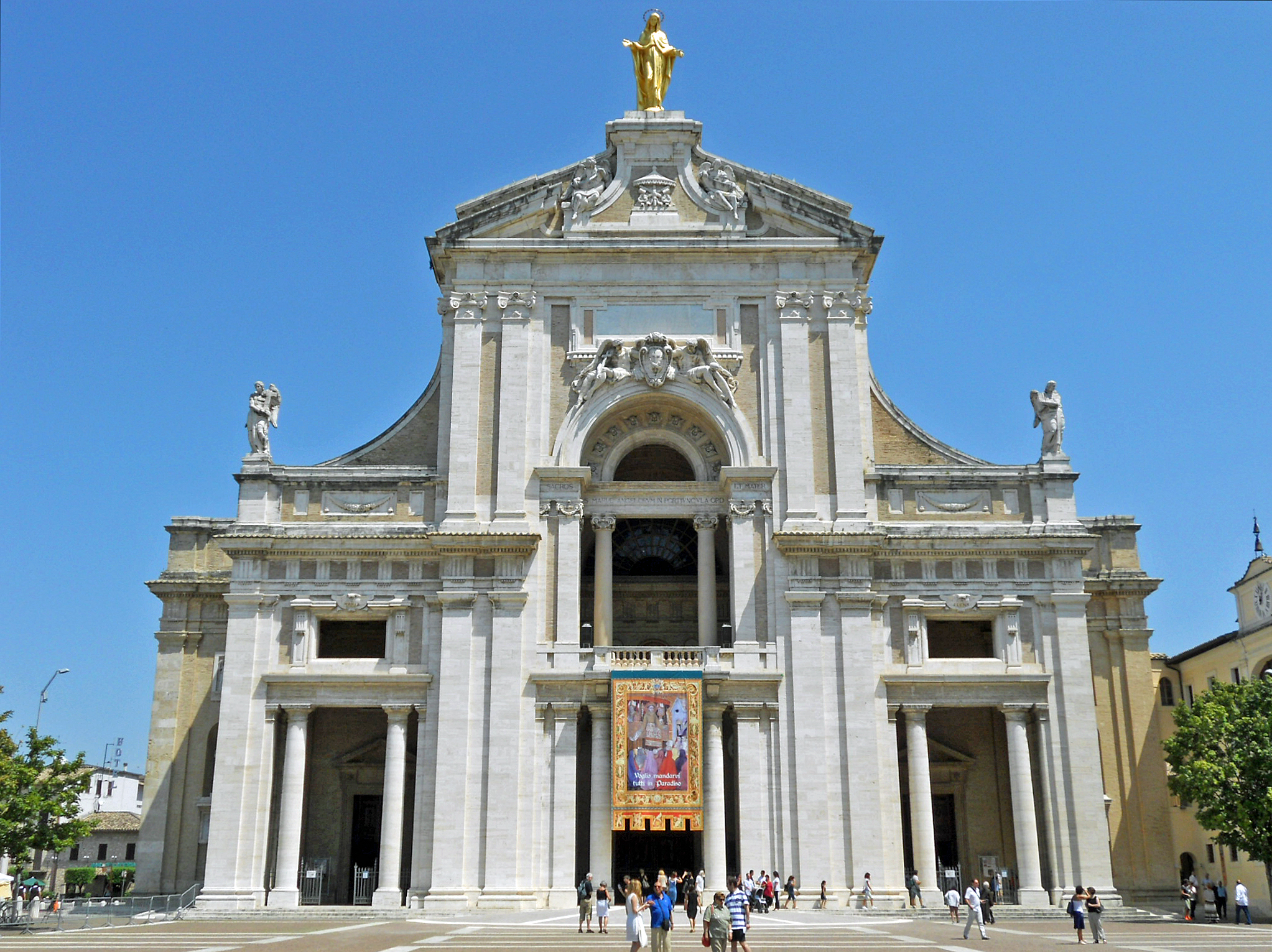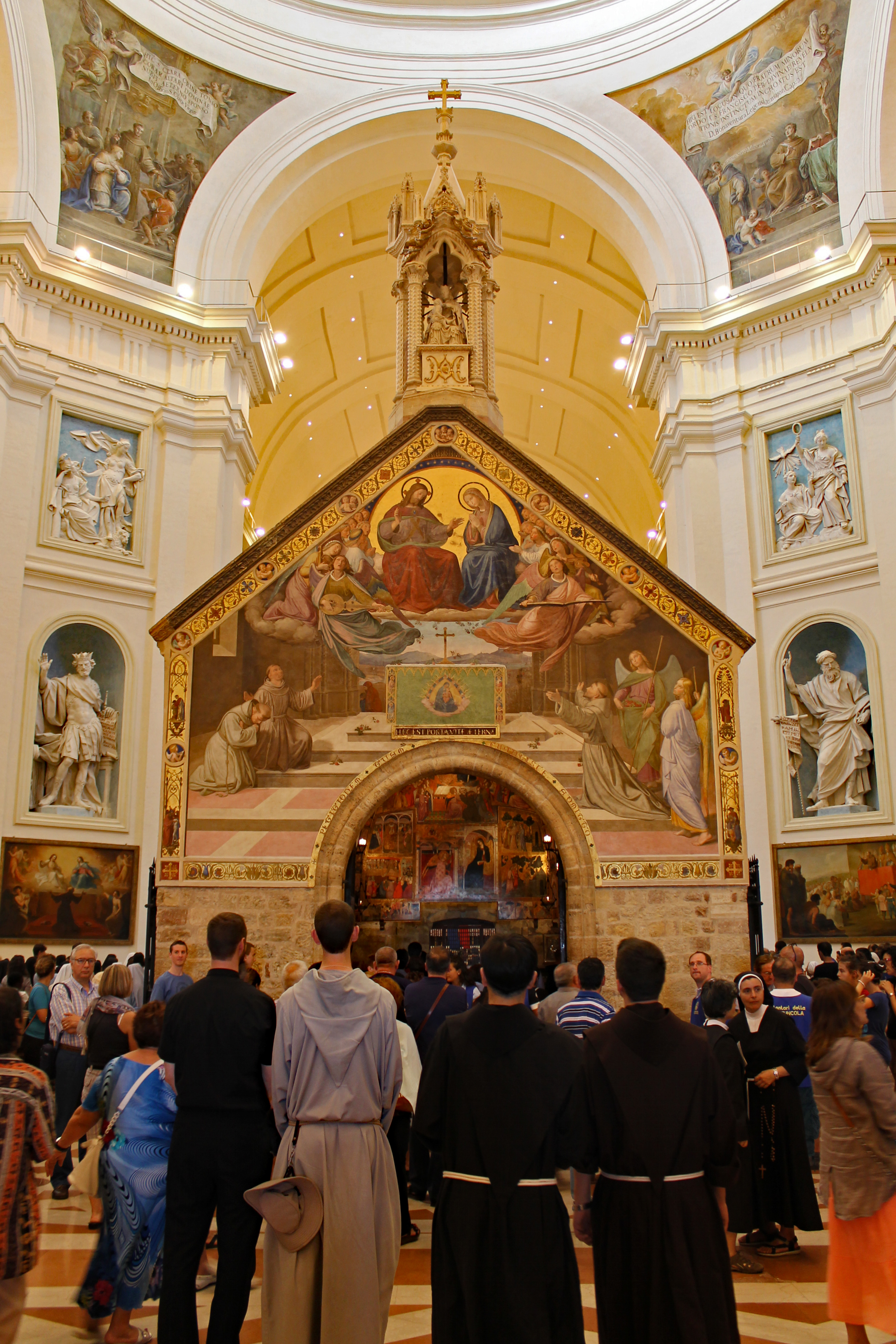wedding ring

The churches dedicated to Mary
October, Marian month. Everything starts from feast of Our Lady of the Rosary of Pompeii (October 7): the people of God always look to the Virgin Mary with sincere affection, with spontaneous devotion, nourished by prayers and simple gestures.
What are the most famous images of the Virgin? Where are? How are the different iconographies of the Madonna born? A “Marian” journey to discover the images that portray the most famous woman in the world. A Church that contains another church within itself. The optical effect, as soon as you enter the immense basilica of Santa Maria degli Angeli in Assisiis suggestive and upsets the visitor.
Our journey into the city of San Francesco, among the churches dedicated to Mary, ends with this basilica, famous all over the world: in her name, she, Mary, accompanied by angels. Basilica full of spirituality, where that Porziuncola so dear to the Franciscan saint, still seems to speak of him and of the Virgin Mary; and, kept in the great basilica, it almost seems to us to witness the unveiling of a matryoshka. If you look upwards, at the top of the façade stands the majestic gilded bronze statue of Mary which seems to preside over the rites, spreading her mantle over this place so sacred and rich in Forgiveness and Mercy.

The grandiose dome was designed in 1569 by the architect Galeazzo Alessi, but the twentieth century poet Giosuè Carducci, mistaking the architect’s name, attributed it to Jacopo Barozzi da Vignola. It is interesting to read his “New Rhymes” in which we find written: “Friar Francesco, how much air does this beautiful dome of Vignola embrace, where crossing your arms in agony, naked you lay on the ground alone! And July is alive and the song of love flies. In the hard-working plane. Oh what a trace: Give me the Umbrian song of your word, The Umbrian heaven give me of your face! On the horizon of the mountain country, In the mild solitary high splendor, Which of your paradise up the doors, I see you straight with outstretched arms. Singing to God: Praised be Lord, For our corporal sister death! ”.
It was Pope St. Pius V (1566-1572), in order to guard the chapels of the Porziuncolaof the Transit he was born in Rose garden and other places made sacred by the memory of St. Francis, to want the construction of the basilica; in 1569, the beginning of the works which will end in 1679. The original project by Galeazzo Alessi (1512-1572) is characterized by a rigorous structural simplicity: the Latin cross plan was chosen; the length of the basilica is 126 meters wide and 65 meters wide. The interior of the basilica, with three naves, has an essential and simple style. Along the side aisles there are ten chapels, five on each side, foreseen by the original Alessi project.
A big semicircular apse of the basilica it houses an imposing wooden choir, made in the 17th century by the friars residing in the adjoining convent. The pulpit, also wooden, has valuable baroque carvings representing episodes from the Pardon of Assisi. The main altar is decorated with seven bronze panels depicting Christ among some Franciscan saints. A curiosity: under the main altar there is a crypt in which, during the excavations carried out in 1966, some architectural remains were brought to light: most likely they were part of the ancient housing structures of the friars of the Porziuncola.
And it is precisely there Porziuncola to represent the heart of the basilica. Upon entering this sober place, the Porziuncola stands out in its background, one of the first churches repaired by St. Francis, after having received Crucifix of San Damiano the mission to repair “my home”. A privileged place for the saint to take refuge in prayer, to read the Word of God in silence and to meditate on the teachings of the Holy Gospel; here he will gather his first traveling companions; and again in this place, in 1205, he will found the Franciscan Order; St. Clare, in this space of the soul, enveloped by nature, in 1211, will receive her religious habit from St. Francis himself.

Among all the important episodes in the life of Francis related to this place, there remains that of the summer of 1216, when he had the divine inspiration to ask the pontiff Honorius III, the indulgence that was later called, in fact, “of the Porziuncola or Great Forgiveness”. The strong telluric events that hit Umbria in 1832 caused serious damage to the basilica which was reopened on 8 September 1840, after long restoration works directed by the architect Luigi Poletti.
The facade it was then radically reworked on a project by Cesare Bazzani, and inaugurated on June 8, 1930. It was on this occasion that the imposing statue of the Virgin in gilded bronze was placed at the top of the basilica. Mary, there, above all, above the basilica, watching over thousands of faithful who arrive every year; the same Virgin sung and celebrated by Francis as the Mother of all.
Dear friends, the magazine San Francesco and the site sanfrancesco.org have always been the megaphone of the messages of Francis, the voice of the great Franciscan family you belong to.
Only thanks to your support and your closeness will we be able to be your point of reference. A small gesture that is worth a lot to us, even just 1 euro is enough.
DONATE
